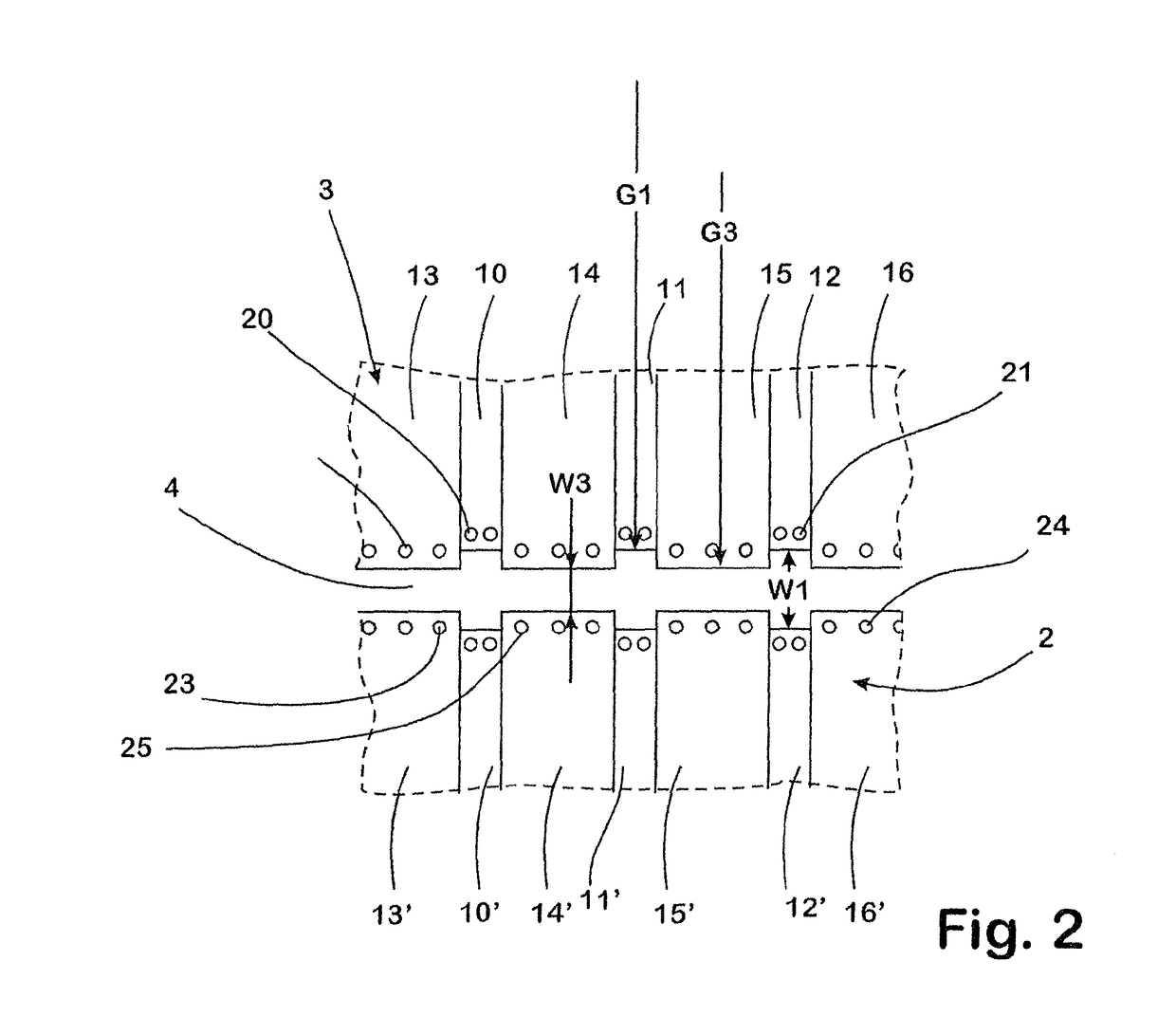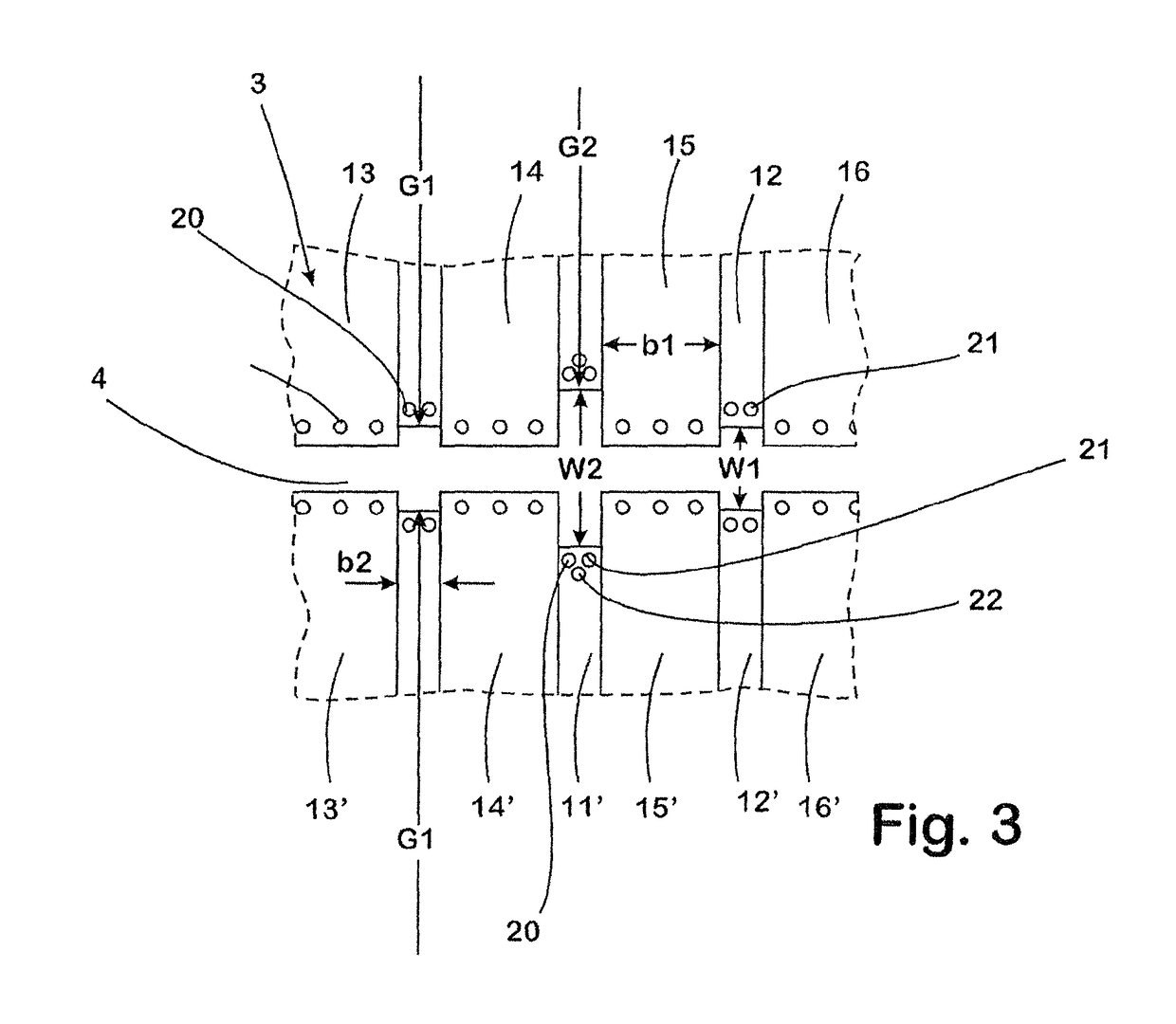Method for producing a cast strip of molten metal and cast strip
a technology of molten metal and casting roller, which is applied in the field of producing a cast strip of molten metal, can solve the problems of significant mechanical and thermal stress on the outer surface of the casting roller that comes in contact with the molten metal, and achieves the effects of improving the thermal resistance of the surface, reducing the impact force, and improving the impact resistan
- Summary
- Abstract
- Description
- Claims
- Application Information
AI Technical Summary
Benefits of technology
Problems solved by technology
Method used
Image
Examples
Embodiment Construction
[0045]The twin-roller casting machine 1 illustrated in FIG. 1 serves for casting molten steel S into a cast steel strip B and has, in principle, a conventional design with two casting rollers 2, 3 that are arranged axially parallel to one another and rotate in opposite directions about their rotating axes A2, A3, wherein said casting rollers define the longitudinal sides of a casting gap 4 formed between the casting rollers, as well as of the melt pool 5 that is situated above the casting gap and into which the molten steel S to be cast is introduced. The two lateral narrow sides of the casting gap 4 and of the melt pool 5 are not defined by the casting rollers 2, 3 and respectively sealed by the plate-shaped lateral seals shown.
[0046]The cast steel strip B exiting the casting gap 4 is also conventionally transported away along a transport path 6. Starting at the casting gap 4, the transport path 6 features a first section that essentially extends vertically and then leads to a roll...
PUM
| Property | Measurement | Unit |
|---|---|---|
| thickness | aaaaa | aaaaa |
| thickness | aaaaa | aaaaa |
| width | aaaaa | aaaaa |
Abstract
Description
Claims
Application Information
 Login to View More
Login to View More - R&D
- Intellectual Property
- Life Sciences
- Materials
- Tech Scout
- Unparalleled Data Quality
- Higher Quality Content
- 60% Fewer Hallucinations
Browse by: Latest US Patents, China's latest patents, Technical Efficacy Thesaurus, Application Domain, Technology Topic, Popular Technical Reports.
© 2025 PatSnap. All rights reserved.Legal|Privacy policy|Modern Slavery Act Transparency Statement|Sitemap|About US| Contact US: help@patsnap.com



